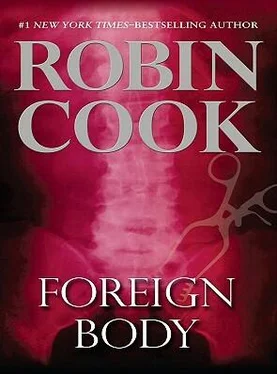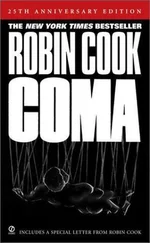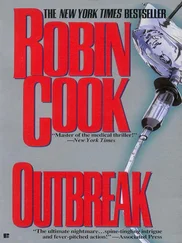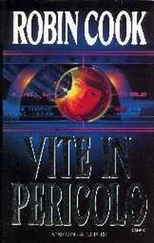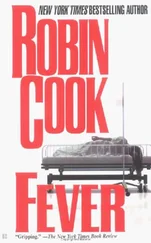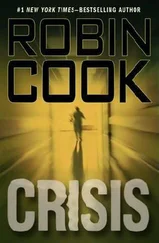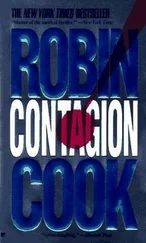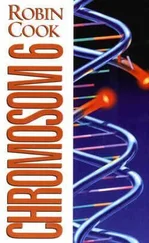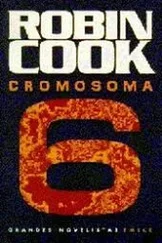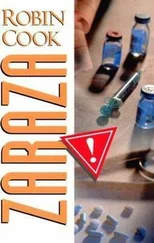“How big is the Indian medical tourism movement?” Jack asked.
“It’s going to be very big,” Jennifer said. “The little I’ve been able to look into it has suggested some people think it might eventually challenge information technology for foreign exchange. By 2010 it’s supposed to produce two-point-two billion. It was growing somewhere around thirty percent per year last time accurate figures had been obtained. It’s interesting to speculate if these recent deaths will impact such an impressive growth. There have been a number of cancellations reported.”
“Maybe that’s why there’s such eagerness on the part of the powers that be to sweep these cases under the proverbial rug,” Jack suggested.
“Jack asked if there was any relationship between the two hospitals,” Laurie said. “You didn’t quite answer the question.”
“Sorry,” Jennifer said. “I got sidetracked. Yes. I found out on the Internet that they both belong to the same sizable holding company. There are big profits to be made in Indian healthcare, especially with the government providing strong incentives, like various kinds of tax breaks. Big business is becoming more and more involved as a consequence of the high profits yet high start-up costs.”
“Jennifer,” Jack said, “when you started to tell us about the timeline discrepancy, you said that it was the main source of your suspicion the deaths weren’t natural. That suggests there were other sources. What were they?”
“Well, first it was that they were pushing me too hard to make a decision about cremation or embalming right from the word go. Since I’m aware that autopsies either can’t be done or are significantly less useful after either procedure, their dogged persistence eventually raised a red flag. Next was the pat and all-too-convenient diagnosis of heart attack after I’d just had Granny evaluated by the UCLA Medical Center, and she’d been given a blue-ribbon report, especially in relation to her heart.”
“They didn’t do any angiography or anything like that, did they?” Jack asked.
“No angiography, but they gave her a stress test.”
“Anything else that has made you suspicious?” Jack asked.
“The cyanosis that was reported on both Granny and Benfatti when they were found.”
“This is interesting,” Laurie said, nodding her head.
“Not the third patient?” Jack asked.
“Him, too,” Jennifer said. “I asked Rita Lucas, the wife, to ask. There was cyanosis, but it was only when they first found him, and he was still alive but in extremis. When they started resuscitation, the cyanosis cleared rapidly, giving them a false impression that the resuscitation was going to be more effective than it was.”
“How long did the resuscitation go on?”
“I don’t know exactly, but my impression was not that long. The patient started getting rigor mortis while they were still trying to revive him.”
“Rigor mortis?” Laurie questioned. She looked at Jack. Both were surprised. Normally rigor mortis didn’t set in for hours.
“The wife said that the surgeon told her that so she wouldn’t think they’d stopped too soon. She said he attributed it to the hyperthermia.”
“What hyperthermia?” Jack asked.
“It was a very difficult resuscitation attempt. The patient’s temperature shot up sky-high, and so did his potassium. They tried to treat both without much result.”
“Good grief,” Jack said. “What a nightmare.”
“So it turns out that all three had generalized cyanosis, which didn’t make a lot a sense to me with the diagnosis of a generic heart attack.”
“That doesn’t make any sense to me, either,” Neil said, speaking up for the first time. “That’s got to be a respiratory problem more than a cardiac problem.”
“Or a right-to-left shunt,” Laurie said.
“Or a poisoning,” Jack said. “It’s not going to be a right-to-left shunt: not with three patients. One, maybe. But not three. I think we’re looking at a toxicology problem here.”
“I agree,” Laurie said. “And I thought I was coming merely to be supportive.”
“You are being supportive,” Jennifer added.
Jack looked at Laurie. “You know what this means, don’t you?”
“Of course,” Laurie responded. “It means there definitely needs to be an autopsy.”
“They are not going to do one,” Jennifer interjected. “I’m telling you. And let me tell you something else, which is what I was talking to Mrs. Benfatti about. This afternoon I got a call from my favorite case manager, Kashmira Varini, and she had a new offer that she and the hospital administration thought would entice me to give cremation a green light. She said that the hospital CEO pulled some strings and had gotten permission for Granny, along with Benfatti and Lucas, to be taken to Varanasi to be cremated and her ashes placed in the Ganges.”
“Why Varanasi?” Jack asked.
“I looked it up in my guidebook,” Jennifer said. “It is interesting. It’s the holiest Hindu city; it’s also the oldest. It’s been occupied for over three thousand years. If you are cremated there, you get extra karma for your next life. When I didn’t jump up and down and agree instantly to the Varanasi offer, she then threatened me just like she threatened Mrs. Benfatti. She said the hospital intends to seek a magistrate’s writ to deal with Granny’s body as they see fit and have the writ in hand by noon tomorrow.”
“That means somehow we have to manage to do an autopsy in the morning,” Laurie said. She looked at Jack.
“I agree,” Jack said. “Looks as if tomorrow might be a full day.”
“I’m telling you they won’t authorize one,” Jennifer insisted. “I told this to Laurie on the phone. The Indian autopsy situation is horrid. It’s a kind of bad legacy system with no independence for the forensic pathologists. The police and the magistrates are in control of deciding if and when an autopsy is to be done, not the doctors.”
“It’s an extension of the British inquest system,” Laurie said. “It’s very much behind the times. It’s hard for medical examiners to provide the necessary oversight they are supposed to provide without freedom from law enforcement and the judiciary, especially if the police and the magistrates are in cahoots.”
“We’ll have to do the best we can,” Jack said. “You mentioned a death certificate. Is there a signed death certificate for your grandmother?”
“Yes, there is,” Jennifer said. “The surgeon was apparently only too happy to sign it out as a heart attack.”
“It probably was, ultimately,” Jack said. “What about the other two cases?”
“As I said, there are death certificates on all three,” Jennifer added. “It’s part of the reason I feel the ministry of health just wants these cases to disappear.”
“That’s confusing if it is true,” Laurie said to Jack. “What we are thinking about here is an Indian healthcare angel of death. Why would the hospitals, and even the ministry of health, want to help cover it up, which it is doing by avoiding an autopsy. It doesn’t make much sense.”
“I don’t think we’re going to be able to answer too many questions until we are reasonably sure our hypothesis about these deaths being murders is confirmed,” Jack said. “So let’s talk about tomorrow.”
They all glanced at their watches.
“Oh my goodness,” Jennifer said. “It’s already tomorrow. It’s after one. You guys better get some sleep.”
“I have an infertility appointment at eight a.m.,” Laurie said, agreeing.
“That’s at the Queen Victoria Hospital,” Jack said. “That’s going to get us there early.”
“I made it there so we’d have an in of sorts.”
Читать дальше
